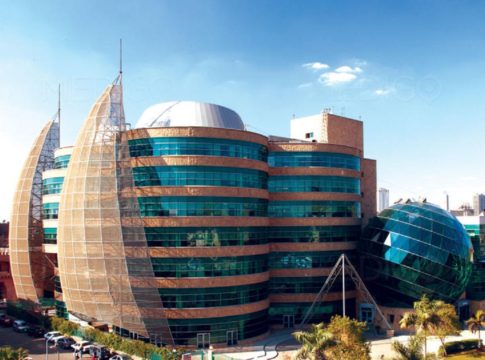The healthcare sector in Egypt, although large compared to its Middle Eastern counterparts, has been relatively stagnant over the past few years. However, there are a variety of investment opportunities, as the Egyptian government is very keen on expanding the healthcare industry, especially relating to medical devices, and plans to build 26 new hospitals. Healthcare expenditures are currently 3 percent of GDP, but will increase to 5 percent of GDP by the end 2017. According to Egypt’s Five Year Macroeconomic Framework and Strategy (from the fiscal year 2014-15 to 2018-19), Egypt’s 2016-17 health budget is EGP 51.6 billion (USD 2.84 billion), which is 6.5 percent of the national budget. The Egyptian government has recently launched Insurance coverage for qualified Egyptians as a pilot project in seven governorates in Upper Egypt. This project includes the upgrade of several hospitals and clinics to be able to provide an adequate level of service to Egyptians.
Consumer healthcare grew by 14 percent in 2014 and spending was USD 23.4 billion. The World Bank estimates that the average life expectancy for Egyptians has increased from 69 to 73 from 2005 to 2010. The Ministry of Health operates 1,300 hospitals or 60 percent of hospital beds while universities, the army and the private sector constitute the remaining 40 percent.
Egypt’s medical device market is the second largest in the Middle East. Sales in medical devices totalled USD 25 million in 2016. As Egypt produces very little medical equipment, the vast majority of the market is supplied by imports, with just one Egyptian company producing a limited range of ultrasound scanners.
Technical medical equipment, such as radiography and ultrasound apparatus, vital statistic monitors, dialysis machines and laboratory microscopes are imported and distributed by a handful of companies who benefit from low import tariffs, the biggest of which, El Gomhoureya, is wholly owned by the government.
Private healthcare providers are therfore limited in choice and price, and often choose to personally import the equipment they need, which, according to customs laws, must be brand new and unused to be allowed into the country. This can be a complicated process, yet Egyptian physicians who travel abroad for conferences often acquire devices in this manner that are not offered by El Gomhoureya.
Formerly the Egyptian healthcare system was predominantly controlled by the government. In the past decade the private sector has taken a more active role as the standard of care in the public sector has declined. Although disposable income is generally low in Egypt, making healthcare spending a serious expense for a majority of Egypt’s citizens (estimated per capita GDP was USD 3,840 in 2015), the majority of Egyptian patients prefer to use private healthcare facilities.
The Ministry of Health is currently undertaking a plan to build new hospitals and renovating and refurbishing existing medical facilities with new technologies and up-to-date equipment, especially in rural, under-served areas. The public sector is expected to account for the majority of expenditure growth in upcoming years because of the government’s Healthcare Reform Program target of universal access to healthcare. The private sector’s demand for sophisticated medical equipment is also growing.
Government pledges to improve healthcare have resulted in a recent boost in the purchase of medical devices, and similarly the proliferation of privately owned hospitals and clinics has considerably raised the demand for high-tech medical equipment in the last 10 years. It is estimated that the market for medical devices will be worth USD 950 million by the end of 2017, and this is almost entirely made up of imports, as Egypt produces very little medical equipment.
Exchange rate used: 1 USD = LE 18.15. Values are in millions of U.S. dollars. Figures listed are unofficial estimates.) N.B. The Egyptian pound has been floated against the dollar, so the exchange rate is not fixed.
The Egyptian government prefers to invest in preventative medicine, which is a specialty that caters to medical devices. According to the World Bank, less than 5 percent of total investments are allocated towards health services. Considering the strong demand and fewer barriers to the market, the medical device sector will be ripe for substantial economic growth in the midterm.
In line with the country’s efforts to upgrade the overall healthcare system, it is expected that there will be opportunities in the long term for U.S. firms that can offer the following services:
- Construction, management, and rehabilitation of hospitals and rural healthcare facilities
- Emergency care (ambulatory) services
- Training programmes for nurses and physicians
- Establishment of quality control of biological and laboratory centres
- Development of quality standards for hospitals, labouratories, and healthcare institutions
- Providing plans for regulator and accreditation bodies
- Training programmes for healthcare


